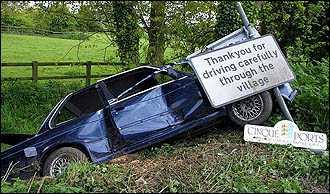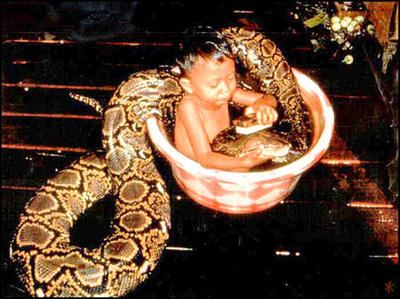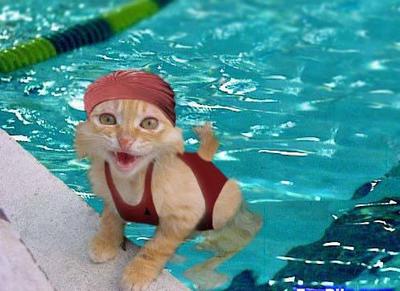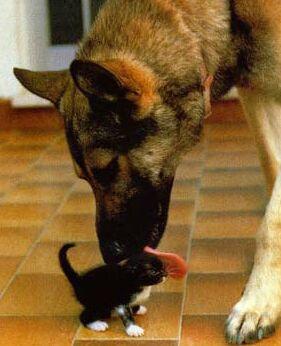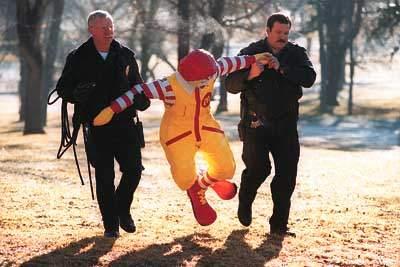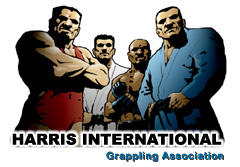
As some of you know, one of the first martial arts associations I started was the Harris International Grappling Association (H.I.G.A.). I taught my first Apprentice Level Grappling Instructor's course back in February of 1999. There were fourteen people in attendance. In July of 2005, I taught my last Apprentice Level Grappling Instructor's course. There were ten people in attendance.
Over the years, H.I.G.A. has grown from just a few Southern California Instructors to now a little over 80 instructors worldwide. H.I.G.A. now has representatives in fourteen countries around the world (in Europe, Asia, Australia, Canada, Mexico, the US and the UK.).
Some of the benefits of being an H.I.G.A. instructor are:
1. A week long apprentice (level one) instructor's course.
2. A 270 page instructor's manual.
3. A HIGA certificate.
4. Access to an instructor's only forum.
5. Continued training (web, video, DVD, private lessons, seminars, etc..).
6. Instructor only resources on my website.
7. An annual instructor only conference.
8. Instructors can stay in other instructor's homes when they travel.
9. The ability to take a week long associate (level two) instructor's course.
10. The ability to take a week long advanced (level three) instructor's course.
My main goal with H.I.G.A. was to develop an international group of grappling practitioners who had the heart and passion to learn, teach, share and grow as a community! While our association may never become the largest group of grapplers, I know that our hearts are in the right place!
One of the things I enjoy most about the association is interacting with the instructors on the instructor only forum. Here are a few excerpts from some recent postings on the Harris International Instructor's Forum:
Instructors,
I am in the process of writing an article. However, I would like to give you a glimpse of the main points of the article before anyone else sees it. I would also like to share a very personal story with you regarding this discovery.
I have been involved in martial arts since 1981. In the early days, my main concern was practicality and self-defense. As soon as I gained a certain amount of proficiency with what I had learned, I wanted more. I walked down the path of technical accumulation, like many do, and found that it lead nowhere. So, I began looking elsewhere.
As I began to try to define and refine my knowledge, I found that my initial concern in martial arts was being effective with the knowledge I had gained. And for many years after this discovery, I focused exclusively on being "effective." However, I soon became bored with effectiveness and began to search for something more "lasting."
Next, I bumped into efficiency. And, I found (through time and effort) that efficiency "enveloped" effectiveness. However, what made it so consuming and addictive was that I could make less movements and exert less effort, yet still accomplish the same goals. Once I got a taste of efficiency, I began focusing more of my training on this area. And, while I have become successful (and efficient) in many areas, still, I sense that something was missing.
So, all of my training, all of my thinking and pondering and all of my writing has lead me to this final thought: I am now moving (very quickly) towards "Playfulness." What is playfulness? Well, from my vantage point it encompasses the following:
1. A high level of mastery in numerous and related areas of combat.
2. A willingness to repeatedly put oneself into vulnerable positions.
3. No need to finish training partners with a submission or hard strike.
4. More of a willingness to have fun and be playful.
Now, having said all of that, here is an additional perspective on effectiveness, efficiency and playfulness:
- Effectiveness gets boring after awhile, especially after four or five thousand hours.
- Effectiveness involves many injuries.
- Effectiveness is heavy, weighty and negative.
- Effectiveness is self-centered.
- Efficiency rarely becomes boring, especially for the experienced and the mature.
- Efficiency involves less injuries.
- Efficiency is much lighter on the emotions.
- Efficiency still involves being effective, but it is not the main concern.
- Playfulness never gets boring.
- Playfulness rarely involves "ego based" injuries.
- Playfulness is light and jovial. It is very easy on the emotions!
- Playfulness is communal.
So, my point in writing all of that is this:
Your ultimate goal in martial arts should be playfulness! Why? Because it is more enjoyable for all involved parties!
Last week, when I was having my lesson with Sifu Dan Inosanto. He asked me a specific question about something that reminded me of my personal journey in martial arts. Well, as I was giving him my answer, I began to explain some of my " personal discoveries" to him. When I had finished explaining my new perspective, he smiled (VERY BIG), walked to his office and pulled out one of his personal notebooks on training in Filipino Martial Arts. He told me that I had just explained to him what some of the old masters of Filipino Martial Arts (guys in their 70's and 80's) had taught him. He even showed me their exact words (and drawings).
When Sifu Dan showed me the notes he had taken from different masters, I was truly amazed at what I saw written. It was as though I had stolen the ideas right off the pages. However, it was comforting to know that some of my personal experiences were validated by other, more experienced, practitioners.
Pretty cool huh?
Roy Harris
-----
That is very cool Roy. I like this idea of playfulness. I am definitely in the Efficiency stage. Most of my conversations with people lately have been on becoming more efficient and less on effectiveness. I do touch on the playfulness now and again but I need to practice so many things that Efficiency is the order of the day for me.
This is one of the reasons that I enjoy having you as a teacher. We seem to be on the same road and through you I get to peak ahead at where I will be further down the road.
Will some of this playfulness be on the BJJ for 40+ dvd.?
S.
-----
S.,
Playfulness is so much more advanced than efficiency or effectiveness. However, to even reach this level, the practitioner must go through hundreds of hours of effectiveness training.
Becoming effective within a few related areas can takes years. Here's an example of how many areas would have to be trained to be effective with the guard:
1. Closed guard control.
2. Open guard control.
3. Half guard control
4. Butterfly guard control
5. Straight arm locks from the guard.
6. Bent arm locks from the guard.
7. Bare arm chokes from the guard.
8. Collar chokes from the guard.
9. Leg chokes from the guard.
10. Leg locks from the guard.
11. Sweeps and reversals from the guard.
12. Street and ring fighting from the guard.
Each of these twelve areas would have to be applied to against the following:
1. BJJ beginners (those with one to three years of experience).
2. Other grapplers (Judoka, Wrestlers, Sambo, etc...).
3. Athletes (those with high level physical attributes).
Now, while it is true a person can become proficient in any one area within a year or two, it must be understood that in order to become proficient in ALL of these areas, a person would have to commit a considerable amount of time to each area and then combine that training with the previous training. Having accomplished all of this, then and only then would a person be able to move forward into becoming efficient.
Now, efficiency takes even longer to accomplish because some things will need to be re-learned, while other things will need to be adapted. And, for the things that are re-learned or adapted, a "shedding" process must occur. Think about that for a moment. In order to digest more information so you can accomplish the same goals with less effort and movement, each student must go through a process of evaluating what is (and is not) necessary. This part of the process of becoming efficient is why it takes much longer to become efficient than it does to become effective.
Once efficiency has been obtained in one area, it must be applied to similar and related areas. And, once a student has acquired efficiency in numerous "related" areas, only then can they begin to become playful.
Does this make sense?
Good playing to you,
Roy Harris
P.S. On a similar note, when I train with Manong Romy and Manong Tony Diego in the Philippines, they ask me to "play."
-----
I'm finding that my training is becoming less and less playful as I train harder for competition. I guess this is how it should be.
Roy, as far as effective vs. efficient. Do you mean having a bunch of techniques you have practiced until you can perform them effectively over and over, and then using them at the proper moment, using timing and sensitivity, is being efficient?
J.
-----
J.,
Being effective means you can consistently employ techniques "1-10" during your grappling matches. However, on a "strength, power and movement" scale from one to ten, it takes a seven for you to repeatedly effect these techniques.
Being efficient means you still consistently employ these same techniques. However, on that same scale, your output of strength and power is now a four. And, instead of it taking you four movements to effect the technique, it now takes two!
Does that make sense?
Roy
-----
Roy,
Would you say that some degree of "playfulness" is what allowed you to make such gains as a purple belt, training with white belts? (I remember you saying that this was when you made some of the biggest leaps in your game, even without upper belts to roll with.)
C.
-----
C. and everyone else,
Allow me to give you all another perspective on what I have just written. With respect to effectiveness, efficiency and playfulness, here is how I have experienced it:
1-7 years of consistent training (2000+ hours) = Effectiveness
8-15 years of consistent training (5000+ hours) = Efficiency
16-40 years of consistent training (8000+ hours) = Playfulness
When I write "consistent training", I am speaking of focused training. The kind of training where you do not leave your training session until you have accomplished a very specific set of measurable goals. While doing thousands of repetitions is honorable, it does not equate to a measurable goal unless you physically have something to show for it. In other words, does the time you've spent performing repetitions show itself when you grapple. If not, then they are just reps. If they do, they you have learned what repetitions are supposed to have taught you.
So, having said all of that, you now understand that playfulness is not something that can be accomplished in less than a decade of focused training. You also understand that you cannot begin to focus on being playful until you are efficient. And, you understand that you cannot become efficient until you have become effective in one specific area, as well as all of the (numerous) related areas!
So, blue belts, you have a ways to go.
Purple belts, you are almost half way there.
Brown belts, you are nearing the end of the journey towards effectiveness.
Are we all on the same page? Do we see how long this path is?
Now C., the biggest leaps in my game happened between blue and brown belt. However, these gains were in effectiveness, not efficiency or playfulness. I did not fully understand playfulness until last year
Does that make sense?
Roy
-----
Yes, that makes perfect sense. Thanks!
C.
-----
Mr. Harris and everyone,
This was an extremely interesting threat for me to read, especially as a blue belt, where I'm just starting to feel some measure of technical ability and fluidity in my game.
Hopefully I am about to embark on a marathon stretch of technique and repetition training to shore up my game, which will translate into increased effectiveness when I roll.
I visited the high school where I'll be teaching today, and the news is good. I will be teaching at the largest high school in the area, and they have a gym with a full-sized, competition-regulation judo mat, and 2 judo teachers at the school! Totally awesome! I can't believe the karma coming my way.
One of the judo teachers already said he wants to teach me judo! There is still the local BJJ school I need to visit so I can roll, and my quest for a place to start teaching starts this week as well.
Again, this thread was amazing - thanks for the insight and information, Mr. Harris. Great training to all.
M.
-----
Thanks for clarifying Mr. Harris.
Also, I was thinking that "playfulness" meant letting people into the game and rolling without any seriousness to your game.
J.
-----
Very good stuff. I think I have been trying to become efficient without being effective enough...
When you talk about using a 7 out of 10 in physical effort... I thought to myself, win, lose, or draw, I never exert myself past a 5 very often. I thought that this was a good thing. And it makes me feel pretty good in some ways for the things that I can still pull off at this level of physical exertion. However, it has made me think that maybe my lack of success with some things is really a lack of enough effort (at my skill level it is ok to use more effort... maybe).
Am I getting this, correct? It is OK for me to try and force the triangle (a bit) against a slightly lesser opponent, and by not doing so, I am missing some things that I should be learning??? Against an opponent that is better or equal, it may be necessary and ok to make a 9 or a 10 effort on a particular move? If I am not misinterpreting this, it means I need to make some changes.
I think it was good of me to try to not use as little physical effort as possible on the one hand, but at the same time, maybe I have let the pendulum swing to far in that direction when I should really be using more physical effort at times... even if it isn't always pretty. I have sort of been equating physical effort with "The Dark Side of the Force". Maybe I need a little taste.
Example yesterday I was rolling with someone that was fairly new but big and strong. I had a fairly smooth transition into a triangle but they were big and I couldn't really close the door. However, had I sat up hard (semi explosively) and hugged my shin, I am pretty sure I would have got the tap. But instead, I kept at it only using my legs, looking for control points, trying to feel what I was doing and why I couldn't get the tap, only to not get the tap and allow him out. Should I have made the effort for the tap?
I can see on the one hand, it may have been good for me to get the tap. However, because I was better skilled that this new person, was it better to do what I did and explore the position, as with a better opponent, they probably would have got out much faster and I would not have had that the chance to explore the position.
To put it another way in case the above is a bad example. When trying to triangle someone my own skill level, should I make the 7 or 8 effort to get the tap (and hence try to use less effort with less skilled people... or with less skilled people, sometimes close the door and sometimes explore the doorway)?
Bottom line, I don't remember the last time I used more than a 6 effort except occasionally to get out of a submission (but even then sometimes I stay at 5 or 6 and tap... and say to myself, "your just not that good yet")
Is this complete madness? I know that my teacher my say to me that I am thinking a bit in absolutes and I am aware of that but am I onto something here at the same time?
B.
-----
B. and all,
A person cannot be efficient unless they are effective at the same time. In other words, how can a person get more work done in less time, yet not do any work? Efficiency embodies effectiveness!
Now, in order to first become effective, a person must define effectiveness. So here's the question: What areas within Jiu Jitsu are you effective?
In a previous article, I mentioned 120 areas to train. Here they are:
1. Escapes from the mount
2. Escapes from the closed guard
3. Escapes from the open guard
4. Escapes from the side mount
5. Escapes from kesa gatame
6. Escapes from kuzure kesa gatame
7. Escapes from head locks
8. Escapes from the front mount
9. Escapes from the knee on stomach
10. Escapes from the half guard
11. Escapes from the back mount
12. Escapes from the sprawl
13. Counters for each individual technique
14. Dominate from the mount
15. Dominate from the closed guard
16. Dominate from the open guard
17. Dominate from the side mount
18. Dominate from kesa gatame
19. Dominate from kuzure kesa gatame
20. Dominate from head locks
21. Dominate from the front mount
22. Dominate from the knee on stomach
23. Dominate from the half guard
24. Dominate from the back mount
25. Counters for each technique
26. Arm locks from the mount
27. Arm locks from the closed guard
28. Arm locks from the open guard
29. Arm locks from the side mount
30. Arm locks from kesa gatame
31. Arm locks from kuzure kesa gatame
32. Arm locks from the front mount
33. Arm locks from knee on stomach
34. Arm locks from the half guard
35. Arm locks from the back mount
36. Arm locks from the sprawl
37. Counters for each technique
38. Escapes from each arm lock
39. Bare arm chokes from the mount
40. Bare arm chokes from the closed guard
41. Bare arm chokes from the open guard
42. Bare arm chokes from the side mount
43. Bare arm chokes from kesa gatame
44. Bare arm chokes from kuzure kesa gatame
45. Bare arm chokes from the front mount
46. Bare arm chokes from knee on stomach
47. Bare arm chokes from the half guard
48. Bare arm chokes from the back mount
49. Bare arm chokes from the sprawl
50. Counters for each technique
51. Escapes from each bare armed choke
52. Collar chokes from the mount
53. Collar chokes from the closed guard
54. Collar chokes from the open guard
55. Collar chokes from the side mount
56. Collar chokes from kesa gatame
57. Collar chokes from kuzure kesa gatame
58. Collar chokes from the front mount
59. Collar chokes from knee on stomach
60. Collar chokes from the half guard
61. Collar chokes from the back mount
62. Collar chokes from the sprawl
63. Counters for each technique
64. Escapes from each collar choke
65. Foot lock from the closed guard
66. Foot lock from the open guard
67. Foot lock from the mount
68. Foot lock from the side mount
69. Foot lock from kesa gatame (transition)
70. Foot lock from kuzure kesa gatame (transition)
71. Foot lock from the front mount
72. Foot lock from knee on stomach
73. Foot lock from the half guard
74. Foot lock from the back mount
75. Foot lock from the sprawl (transition)
76. Counters for each technique
77. Escapes from each foot lock
78. Knee locks from the closed guard
79. Knee locks from the open guard
80. Knee locks from the mount
81. Knee locks from the side mount
82. Knee locks from kesa gatame (transition)
83. Knee locks from kuzure kesa gatame (transition)
84. Knee locks from the front mount
85. Knee locks from knee on stomach
86. Knee locks from the half guard
87. Knee locks from the back mount
88. Knee locks from the sprawl (transition)
89. Counters for each technique
90. Escapes from each knee lock
91. Heel hook from the closed guard
92. Heel hook from the open guard
93. Heel hook from the mount
94. Heel hook from the side mount
95. Heel hook from kesa gatame (transition)
96. Heel hook from kuzure kesa gatame (transition)
97. Heel hook from the front mount
98. Heel hook from knee on stomach
99. Heel hook from the half guard
100. Heel hook from the back mount
101. Heel hook from the sprawl (transition)
102. Counters for each technique
103. Escapes from each heel hook
104. Take downs from standing
105. Counters for each take down
106. Take downs from kneeling
107. Counters for each take down
108. Throws from standing
109. Counters for each throw
110. Foot and knee sweeps from standing
111. Counters for each sweep
112. Standing joint locking
113. Counters for each lock
114. Standing chokes
115. Counters for each choke
116. Have the ability to flow between the techniques
117. Basic self-defense
118. Physical conditioning (timing, endurance, speed, explosiveness, etc...)
119. Mental conditioning (focus, determination, pain tolerance, etc...)
120. Strategy
Now, while listing these 120 areas will bring some light to the issue, we really haven't gone into any depth. Let me give you some examples of depth. Let's take a look at the first area I mentioned: Mount escapes. Here are some questions I would ask you:
1. Are you effective with your upa escapes? What are the percentages with someone close to your own skill level?
2. How many upa escape variations do you know and can perform well?
3. How many upa escape variations can you perform reflexively?
4. How many of the upa escapes can you perform equally on both sides?
5. How much energy do you expend to effect your upa escapes?
6. How long does it take you to escape?
7. With whom can you repeatedly perform your upa escapes effectively? In other words, what kind of person gives you a difficult time when you are trying to employ ONLY the upa escapes?
8. When do you begin your upa escape?
9. How do you know when to begin your upa escape?
10. Are you upa escapes from your back as good as the upa escapes from your side?
11. Are you effective with your elbow/knee escapes? What are the percentages with someone close to your own skill level?
12. How many elbow/knee escape variations do you know and can perform well?
13. How many elbow/knee escape variations can you perform reflexively?
14. How many of the elbow/knee escapes can you perform equally on both sides?
15. How much energy do you expend to effect your elbow/knee escapes?
16. How long does it take you to escape?
17. With whom can you repeatedly perform your elbow/knee escapes effectively? In other words, what kind of person gives you a difficult time when you are trying to employ ONLY the elbow/knee escapes?
18. When do you begin your elbow/knee escape?
19. How do you know when to begin your elbow/knee escape?
20. Are your elbow/knee escapes as effective when your opponent is in mount position #1 as mount position #3?
By answering these twenty questions, you can begin to define your journey in effectiveness and see how far you are away from beginning your journey towards becoming efficient. Only by knowing exactly where you are can you move forward into more complex areas.
Now, these same twenty questions can be further expanded by comparing and contrasting the differences and similarities between your gi and your no gi work. Do you see how the road to effectiveness is a long one? Can you see how most will never even touch on the topic of efficiency as a blue or purple belt? While a person can understand the concept, actually training it will need to wait until they have become effective in the numerous, and important, fundamental areas within Jiu Jitsu.
Now, here are some harder questions:
1. How effective would you be if you could only use guard control and straight arm locks?
2. How effective would you be if you could only use guard passing and straight arm locks?
3. How effective would you be if you could only use guard control and bare arm and leg chokes?
4. How effective would you be if you could only use takedowns and leg locks?
5. How effective would you be if you could only use guard control without using your hands?
6. How effective would you be if you could only use side mount control without the use of your dominant hand?
7. How effective/consistent are you at finishing the straight arm when your opponent resists by placing his hands together?
Once a high level of effectiveness is gained in a number of related areas, only then can a person begin the journey onto efficiency. For example, once proficiency is obtained with employing the triangle choke, here are a few important questions:
1. Can you take the fifteen individual components that make up the triangle choke and condense them to nine?
2. Can you take these condensed components (nine of them) and condense them even smaller to only five moving parts?
3. And, can you take these condensed five component and apply them to the same opponents with the same amount of effectiveness by using less power to effect the choke?
4. Finally, can you do this with each and every individual technique that you know?
Is your perspective on effectiveness and efficiency starting to change? Can you see how the road to success in these two areas is long and tedious?
Roy Harris
-----
That's a bit to think about... Thanks for the excellent reply. I will ponder this info and try to adjust my training. Almost like being shot between the eyes with a diamond.
B.
-----
Wow, that was an eye-opening read. I'm printing it out so I can stare at it some more!
C.
-----
Two last comments:
1) I changed / corrected some of what I have written above. So, if you printed it before, print it again.
2) I have more to add to the above. Here it is:
Let me give you some numbers to help you put this information into context:
To be called "effective" in Brazilian Jiu Jitsu, most practitioners will need to learn and become proficient at somewhere around 120 related techniques. Look at it this way (twenty areas to train, six techniques to train in each area):
1. Throws and takedowns
Three primary techniques
Three counters to the primary techniques
2. Mount control
Three primary techniques
Three counters to the primary techniques
3. Mount escapes
Three primary techniques
Three counters to the primary techniques
4. Guard control
Three primary techniques
Three counters to the primary techniques
5. Guard passing
Three primary techniques
Three counters to the primary techniques
6. Side mount control
Three primary techniques
Three counters to the primary techniques
7. Side mount escapes
Three primary techniques
Three counters to the primary techniques
8. Kesa gatame control
Three primary techniques
Three counters to the primary techniques
9. Kesa gatame escapes
Three primary techniques
Three counters to the primary techniques
10. North and south control
Three primary techniques
Three counters to the primary techniques
11. North and south escapes
Three primary techniques
Three counters to the primary techniques
12. Back mount control
Three primary techniques
Three counters to the primary techniques
13. Back mount escapes
Three primary techniques
Three counters to the primary techniques
14. Straight arm locks
Three primary techniques
Three counters to the primary techniques
15. Bent arm locks
Three primary techniques
Three counters to the primary techniques
16. Bare arm chokes
Three primary techniques
Three counters to the primary techniques
17. Leg chokes
Three primary techniques
Three counters to the primary techniques
18. Collar chokes
Three primary techniques
Three counters to the primary techniques
19. Leg locks
Three primary techniques
Three counters to the primary techniques
20. Sweeps
Three primary techniques
Three counters to the primary techniques
Spending 100+ hours in each of the above twenty related training areas would give you (or anyone) an overall effective game.
Does this make sense?
Good, now get busy!
Roy Harris
-----
AH HA!
A recipe... finally!
J.
-----
The second list seems more manageable. Wow... Awesome.
What do I do after I master all of these?
Thanks... I really think this will help me condense my nebulous goals.
B.
-----
B. and J.,
The first list is a "list of mastery"; which in the end allows a person to be "playful."
The second list is for those who are only concerned with being "effective." That's why it seems more manageable ;)
Roy Harris
\/\/\/\/\/\/\/\/\/\/\/\/\/\/\/\/\/\/\/\/\/\/\/\/
Here is another post from the instructor's only forum:
Dear Instructors,
I'd like for you to read this e-mail I received today. It is a letter of recommendation about one of our very own:
Training with Mr. Manny Kim
Mr. Harris,
I just wanted to let you know that I have been training with Manny Kim for roughly the past six or seven months and have nothing but praise for Manny's teaching and integrity. I recently bought my owns mats and Manny has been coming to my house to train at 6am on a regular basis. He is always on time and very respectful of the fact that my wife and kids are asleep when we train. I have trained at one time or another at most of the local BJJ schools and have to say that my training with Manny has been the most beneficial of all my experiences. Granted, I have been more consistent with Manny than with my prior training but I truly find his teaching formula extremely accessible. He is great teacher and an all around nice guy. You have a great representative in Chicago!
I wish you all the best with your future endeavors.
Sincerely,
I.S.L.
Attorney at Law
\/\/\/\/\/\/\/\/\/\/\/\/\/\/\/\/\/\/\/\/\/\/\/\/
Mr. Harris,
Do you remember several years back, receiving an anonymous e-mail from a kid who was training with you at the time? He sent from a temporary/bogus e-mail account, and shut down the account right after sending the note. It must have been at least 5-6 years ago. Given the large numbers of e-mails you receive, I suspect remembering one small e-mail would be highly unlikely. For all he knew, it may not have even reached your inbox. Regardless, I know the person who wrote the e-mail. If I remember that he wrote the e-mail to thank you for being an inspirational teacher. More importantly, he confessed that his past was not exactly pristine, and that he once had problems with drugs, alcohol, women, etc. He explained that your academy, and the great folks who trained and taught there, inspired him to gain a clearer perspective on his life. He cleaned up his act, and he knew that it would not have been possible without the Harris Academy.
That kid was me!
Thank you again,
B.
\/\/\/\/\/\/\/\/\/\/\/\/\/\/\/\/\/\/\/\/\/\/\/\/
I am very proud of what each member of the association is doing! And, I hope this entry has given you a small glimpse of what the Harris International Grappling Association is trying to accomplish.
Sincerely,
Roy Harris















